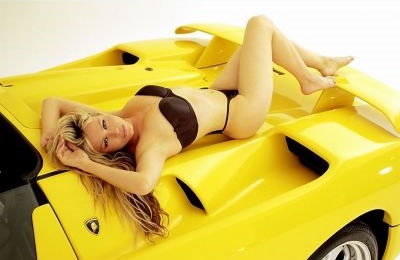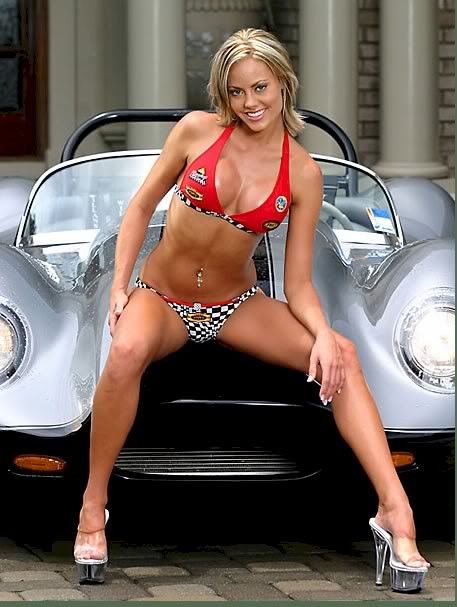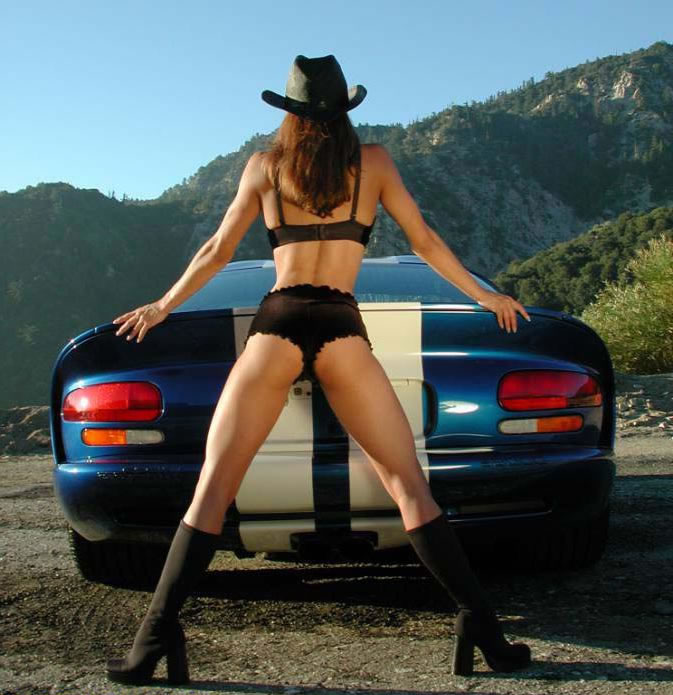|
|
|---|
Tuesday, October 12, 2010
Still not satisfied with your car’s performance after buying an intake kit? Want to make your car feel and sound sportier? Well then a free-flowing exhaust system is the next step you should take, to really wake up the beast inside of your car! This is my second favorite choice when it comes to affordable performance modifications for your car. While I love the roar of a well designed intake, a car's exhaust note always wins me over. Whether a car is slow or fast, if it sounds good, I give it the respect it deserves. Now many will say that they don’t like their car to be obnoxiously loud, and others say that it a car can never be loud enough. I personally like a pretty loud exhaust system. If you buy the proper system, or if you piece the right parts together, then you can make an exhaust set-up that is perfect for your own needs.
The purpose of a car’s exhaust system is to release the heat and exhaust gases created by combustion, away from the engine bay and the cabin of the vehicle. The gases that result from engine combustion are extremely harmful, and must be kept away from the driver and their passengers. For these reasons, most exhaust systems are piped from the engine compartment all the way to the rear of the car. In doing so the gases exit the tailpipe into the open air, and are kept away from the cabin of the vehicle.
There is a lot more to an exhaust system then a muffler and some piping. Auto manufacturers spend millions of dollars in research and development to perfect each aspect of the cars that they produce. Designing the factory exhaust system is a significant part of the R&D involved in developing a vehicle. In fact it is just as important, if not more important, than the air induction system.
Today car manufacturers have taken a completely different outlook on exhaust system design compared to 30-40 years ago. In the muscle car era, there were no emissions requirements, and most cars came equipped with large, noisy V8’s. Now days everyone wants the quiet, fuel efficient and environmentally friendly cars that have no soul. As a result, car manufacturers must design vehicles around today’s standards.
Mufflers & Resonators:
On most modern vehicles, the most restrictive part of the factory exhaust system lies in the mufflers and the resonators. Mufflers and resonators are essentially canisters that are strategically placed throughout the exhaust system, to keep noise levels down inside and outside of the car. Mufflers and resonators have varying amounts of chambers and insulation inside of them to help cancel out the sound waves produced by the engine through destructive interference. Your average car is equipped with at least one large muffler, and one resonator; most cars have more than one of each. For this reason most factory, non-performance cars, are very quiet and boring.
In order to wake up the "beast" inside your car, you can first swap out the factory muffler. This is the best choice for anyone simply looking to make their car sound a bit louder and more aggressive. There are dozens of aftermarket exhaust companies that sell various types of mufflers for different applications, but which one should you choose? I feel it all comes down to personal preference when you modify your factory exhaust system. Muffler designs vary greatly, which is why each muffler produces a different sound on the same car. Some mufflers simply change the tone of the car, without drastically altering noise levels. Other mufflers can make the car very loud, even annoying to most people.
There are 3 types of mufflers that are commonly used today: chambered, absorption and turbo style. Each mufflerhas its own characteristics, so it's pretty difficult to put one ahead of the other. Each muffler will produce a different type of sound, and they all perform a little different as well. From a performance standpoint, each of the 3 performs better than factory style mufflers. By increasing flow, there is less back pressure, which equals more power.
1. Chambered mufflers use destructive interference to lower the decibel levels created by the engine. The sound waves and exhaust gases enter the muffler and go through a series of baffled chambers where the waves are reflected against the walls of each chamber, which cancels them out. Chambered mufflers produce a deep sound at idle and lower speeds, but they also can cause cabin drone. Flowmaster is the most popular, highly regarded choice when it comes to chambered mufflers.
2. Absorption mufflers "absorb" the sound waves coming through the enclosure to bring noise levels down. Most absorption style mufflers use "straight through" technology, which makes them freer-flowing then the other two types. Sound waves and exhaust gases enter a perforated tube and are absorbed by the fiber filling that surrounds the tube. Absorption style mufflers are usually on the louder side of the spectrum, due to their straight through design. They often provide a higher pitched tone, and are usually sound "raspy" or "tinny" as load increases. Magnaflow is the most popular choice when it comes to absorption mufflers.
3. Turbo style mufflers use the same style design as a factory muffler, but are freer flowing. Like an OEM muffler, the sound waves and exhaust gases enter a perforated tube, and bounce off the walls of the muffler, and possibly a set of baffles. The sound waves and gases then enter another parallel, perforated tube and repeat the same cycle. The more tubes in the muffler case, the quieter the exhaust note produced. As a result, turbo mufflers quieten the exhaust by slowing and restricting the flow of the gases and waves moving through the enclosure. While turbo mufflers are a large improvement over stock, they usually flow worse then chambered and absorption mufflers.
Just a muffler or the entire system?
Once you've chosen the type of muffler that you want to run, you must then decide if you want to change just the muffler, or a section of the exhaust, or the entire system. Obviously this decision will be made based on at least three factors: 1. your budget, 2. how loud you want your car to be, and 3. how performance minded you are.
As far as budget is concerned, you can spend between $20 and over $1,000 dollars on a modified exhaust system. A simple muffler swap will be the cheapest choice, because parts can be found relatively cheap, depending on the choice of muffler and the manufacturer. Anyone with a welder and a sawzall can install their own muffler, as long as it is direct fit. If you can't do it yourself, then you can bring the muffler(s) to any exhaust shop, and they can install it for you at a reasonable price. Most aftermarket mufflers range from $20 to $500, depending on the car that they're for. Most mufflers can be used universally on almost any car, but direct fit is always better. A performance muffler can make the factory exhaust system considerably louder, or not much louder at all. Unfortunately for most cars, a simple muffler swap will show no real performance gain, but theoretically the exhaust should flow better than stock.
The prices start climbing when you look into after market axle-back, cat-back, header-back, or turbo back systems. Axle-back and cat-back systems usually include an aftermarket muffler with, or without nice exhaust tip(s), and a section of pipe(s) that bolts up to the factory exhaust system. The terms are pretty self-explanatory; cat-back systems replace the exhaust system from the catalytic converter(s) back to the exit of the car, axle-backs are from the rear drive axles to the exit. Cat-backs provide more performance, and can be louder than axle-back systems, because they replace a bigger section of the factory system, with larger, freer-flowing piping. Axle backs and cat-backs can range from $100 to over $3,000 depending on the make and model of the car. In my opinion, an axle-back system is not worth the money if there is a cat-back available for a little more money. Usually when more of the factory system is changed, the motor will perform and sound that much better.
While aftermarket exhaust companies spend lots of time and effort perfecting their exhaust systems, you don't have to pay their premium to get an exhaust system that sounds and performs better then stock. Most independent muffler/exhaust shops are capable of doing everything from changing your muffler, to fabricating a completely custom exhaust system that is specific to your needs. In fact, I always prefer to design a system made up of the components of my choices, versus paying extra for a product that anyone can buy. An independent muffler/exhaust shop will be a better bang for your buck usually, because they haven't spent thousands of dollars on research and development costs like the large companies have. As a result, dependent on piping and components, prices will range from $150 to $1500 for a custom exhaust system built by an independent shop.
Decibel level is largely based upon the choice of mufflers and resonators used in the exhaust system. The "straight through" style mufflers are usually the loudest, as mentioned above. Chambered and turbo style mufflers do a much better job of “muffling” the exhaust note, but they’re also more restrictive. The number of mufflers and or resonators used also varies considerably. Running "straight pipes" (no muffler) or using only one muffler/resonator will be obnoxiously loud, and not street-able; this kind of set-up is meant for car shows and the race track. More then one muffler and or resonator is recommended for your exhaust system, so that you can drive around town without getting pulled over. Unfortunately, there is a legal decibel limit for a car’s exhaust system. If your car is above the legal limit, which ranges from 112 to 130 decibels, depending on which state you live in, you can be given a fix-it ticket for your exhaust.
In order to achieve the maximum performance from your exhaust system, you want create a free flowing path. Mufflers and resonators cause unwanted "back-pressure" for the motor, which can be detrimental to performance, especially on higher performing engines. Back-pressure is a term used to describe a pressure build up in the exhaust system, slowing the velocity of the exhaust gases, and sending them back towards the engine. Contrary to popular belief, back-pressure is no longer necessary for a car to perform well, and have a smooth and linear power-band. With older carbureted engines and the early fuel injected motors, the engine depended on a certain amount of back pressure to keep from running too lean of an air-to-fuel mixture. However, generally speaking, most cars produced after 1996 have very efficient engine management systems that monitor and control the flow of exhaust, as well as the air-to-fuel mixture. Consequently, the vehicle’s ECU/ECM (Electronic Control Unit/Module) is able to accommodate for a higher flowing exhaust system, without effecting reliability.
Labels: Performance Mods


























0 comments:
Post a Comment